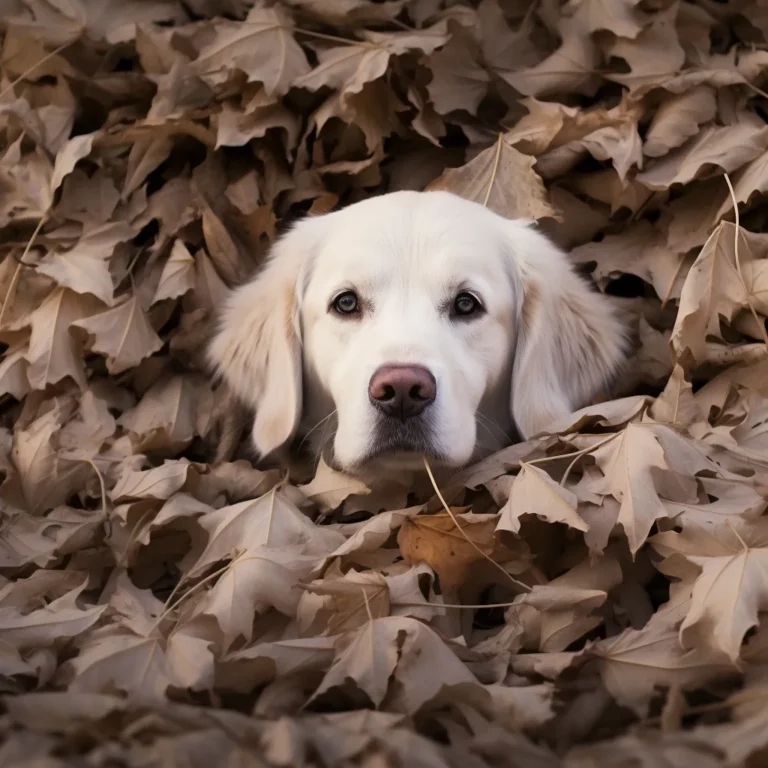Do Golden Retrievers Have Dew Claws? That is The Question…
Ever noticed an extra little ‘toe’ on your golden retriever’s leg and wondered, “Do golden retrievers have dew claws?” We’ll explain what dew claws are and why some golden retrievers have them.
Anatomy of a Golden Retriever’s Paw
Golden Retrievers are known for their friendly and outgoing personalities, but they are also renowned for their athletic abilities. Their paws are essential to their overall health and well-being, as they allow them to run, jump, and play with ease. A Golden Retriever’s paw is made up of several components that work together to provide support and stability.
Description of the Paw and Its Components
A Golden Retriever’s paw consists of four main parts: the pads, the nails, the toes, and the dew claws. The pads are thick cushions of fat that absorb shock and provide traction on different surfaces. The nails act as anchors that grip onto surfaces when running or jumping.
The toes have joints that help with flexibility in movements such as turning or pivoting. And lastly, the dew claws are small digits located higher up on the leg than regular toes.
Location and Appearance
Dew claws can be found on both front legs (and sometimes back legs) of a Golden Retriever. They are located higher up on the leg than regular toes, often around what would be considered their equivalent of a wrist in humans.
Dew claws appear small compared to other toes; some even appear vestigial or rudimentary. Dew claws come in various shapes and sizes depending on each individual dog’s genetic makeup; some can be quite large while others may resemble tiny skin tags more than actual digits.
They also vary in color but tend towards being lighter than surrounding fur. Overall, dew claws contribute little to no function for most dogs during everyday activities such as walking or running but can cause issues if not properly maintained or trimmed regularly.
Exploring the Pros and Cons of Dew Claw Removal
The Benefits of Removing Dew Claws
The removal of dew claws has been a common practice for many years, especially among working breeds. The main reason for this is to prevent them from getting caught on objects or injuring themselves during physical activity.
This is particularly relevant for Golden Retrievers, who are known for their energetic and active nature. Another benefit of removing dew claws is reducing the risk of infection.
Dew claws are located near the paw pads, which can collect dirt and debris, leading to irritation and infection. By removing these claws, pet owners can prevent this problem from occurring altogether.
Some breeders may choose to remove dew claws for cosmetic reasons. They believe that it gives their dogs a more streamlined appearance that conforms better to breed standards.
Potential Risks and Negative Effects
While there are benefits associated with removing dew claws in Golden Retrievers, there are also risks to consider. One significant negative effect is pain during the procedure itself. Although modern anesthesia techniques minimize discomfort during surgery, there can still be postoperative pain as well as discomfort caused by bandaging.
Additionally, removing the dew claws increases the risk of infection if proper care instructions are not followed carefully after surgery. This can lead to complications such as swelling or inflammation around the area where the claw was removed.
Furthermore, even if all precautions have been taken post-surgery, some dogs will inevitably develop an infection at some point in their lives due to having fewer layers of protection on their footpads. This could lead to secondary infections that require antibiotics or other treatments.
Removing dew claws may negatively affect a dog’s balance and ability to grip things with its paws properly since they are used as a stabilizer when walking on rough terrain or climbing obstacles. Overall it’s important that Golden Retriever owners weigh the pros and cons of dew claw removal carefully before making a decision.
Factors to Consider
Age
One of the most crucial factors that need consideration when deciding whether to remove a Golden Retriever’s dew claws is the age at which the procedure is done. Typically, veterinarians recommend that pups undergo dew claw removal surgery when they are between three and five days old.
At this age, dew claws are not yet fully developed and have not yet attached to the underlying tissues. If the dog owner decides to wait until later in their puppy’s life before considering dew claw removal, complications may arise.
For example, if the dog has an accident or suffers an injury, surgery could become more complicated and risky. Waiting too long can also increase post-surgical pain and risks of complications.
Activity Level and Lifestyle
Another essential factor to consider when deciding whether or not to remove a Golden Retriever’s dew claws is their activity level and lifestyle. Active dogs that regularly engage in activities such as hiking, swimming or hunting may be more prone to sustaining injuries on their feet than less active dogs.
In such cases, it might be necessary for them to undergo dew claw removal surgery as a preventive measure. However, if your dog has a less active lifestyle with few possibilities of getting injured due to their paws’ structure, then removing their dew claws may not be necessary.
Personal Preference
It is essential also to consider personal preferences when contemplating performing dew claw removal on your Golden Retriever. Some dog owners prefer their pets without any extra toes while others feel that leaving them intact makes for better aesthetics. While personal preference should never be the only factor considered in making such decisions regarding pet health care needs; it remains important as every pet owner wants their pet looking its best and comfortable in their skin.
Alternatives to Dew Claw Removal
If, after thorough evaluation, a Golden Retriever owner decides against dew claw removal surgery, other alternatives are available. One of the most effective options is regular dew claw trimming and maintenance.
Regular trimming and maintenance can help keep dew claws short and thus reduce the risk of them getting caught or torn. Additionally, dog owners also have the option of using protective gear such as boots or socks when engaging in activities that might pose potential risks to their pet’s paws.
Deciding whether to remove a Golden Retriever’s dew claws is an individual decision that should be made after careful consideration of all the factors mentioned above. With proper attention given to each factor outlined above pet owners can rest assured they’ve made informed decisions about handling their pet’s health care needs.
Alternatives to Dew Claw Removal
Regular Trimming and Maintenance
Dew claws can be kept healthy and trimmed with regular maintenance. This involves trimming the nails periodically, preferably once a month or as needed. However, it’s essential to be careful when trimming dew claws as there is a risk of cutting too short and causing injury or pain.
Therefore, it’s best to seek guidance from a veterinarian or professional groomer on how to trim dew claws correctly. Another benefit of regular trimming is that it helps prevent painful injuries that may require dew claw removal in the first place.
Overgrown nails can become caught on objects, leading to torn nails or even broken bones in severe cases. This is especially important for active dogs like Golden Retrievers who love running, jumping, and playing.
Protective Gear for Active Dogs
If your Golden Retriever engages in activities like hiking or running on rough terrain where they may snag their dew claws, protective gear could help prevent injuries without having to remove them entirely. For example, dog boots designed specifically for outdoor activities are an excellent option because they offer protection not only for the paws but also for the dew claws. Another protective option is nail caps that fit over the dog’s nails snugly and protect them from breaking or snagging during physical activity.
Nail caps come in various sizes and colors so you can choose one that fits your dog’s paw size and personality. However, it’s essential to note that while these options provide adequate protection against injuries, they don’t eliminate the need for regular maintenance.
The Verdict
While some people opt for removing their Golden Retriever’s dew claws entirely due to the potential risks associated with injury or infection, this procedure remains controversial among veterinary professionals today. With proper care and maintenance of dew claws through regular trimming or protective gear during physical activity, removing them entirely may not be necessary.
Ultimately, the decision to remove dew claws should be made with careful consideration of the dog’s activity level, lifestyle, age and personal preference. Consulting a veterinarian is always recommended to ensure the best decision for your furry friend’s health and well-being.
Conclusion
Summary
After reviewing the anatomy of a Golden Retriever’s paw, exploring the pros and cons of dew claw removal, and examining factors to consider when deciding whether to remove dew claws, it is clear that this is a complex issue with no easy answers. Dewclaws serve a purpose but can also lead to injury or infection in certain circumstances. Ultimately, the decision to remove or keep dewclaws should be made on a case-by-case basis considering multiple factors.
Personal opinion on the need for dew claw removal in Golden Retrievers
As an expert writer who has researched this topic thoroughly, my personal opinion is that dew claw removal in Golden Retrievers is not always necessary or advisable. While there are situations where it may be beneficial (such as with working dogs or highly active pets), many pets can live happy and healthy lives without undergoing this elective procedure.
Regular trimming and maintenance of dew claws can help prevent issues related to overgrowth and injury. Additionally, protective gear such as boots can be worn during activities where there is an increased risk of injury.
The decision of whether to remove a Golden Retriever’s dew claws should not be taken lightly. Pet owners should weigh all factors and consult with their veterinarian before making any decisions.
It is important to keep in mind that while some dogs may benefit from this procedure, others may experience negative effects such as pain or infection. Ultimately, what matters most is ensuring that our furry friends have happy and healthy lives free from unnecessary harm or discomfort.





